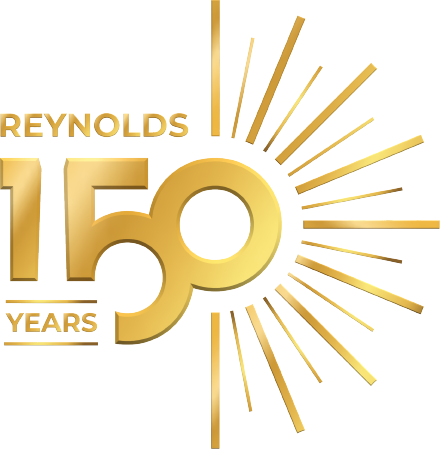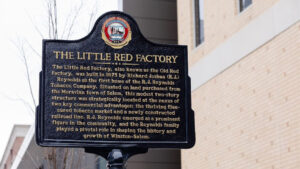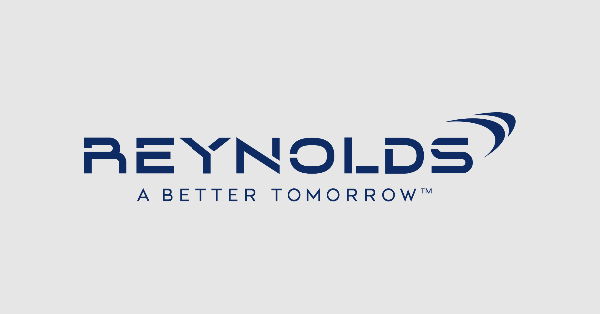WINSTON-SALEM, N.C. – Feb. 9, 2017 –
- Reported EPS: Fourth quarter at $0.60, up 215.8 percent from prior-year quarter; full year at $4.25, up 65.4 percent from last year
- Adjusted EPS: Fourth quarter at $0.62, up 29.2 percent from prior-year quarter; full year at $2.31, up 16.7 percent from last year
- Reflects the impact of adjustments as detailed in Schedule 2
- All reportable business segments continue to demonstrate excellent financial performance
- Total cigarette drive brands retail market share up 0.3 pts. at 32.0% RAI announces 10.9 percent dividend increase
- RAI / BAT transaction announced Jan. 17, subject to shareholder and regulatory approvals
All references in this release to “reported” results refer to GAAP measurements; all “adjusted” results refer to Non-GAAP measurements, as detailed in Schedules 2 and 3 of this earnings release, which reconciles reported (GAAP) to adjusted (Non-GAAP) results, as applicable.
Reynolds American Inc. (NYSE: RAI) today announced fourth-quarter 2016 reported EPS of $0.60, up 215.8 percent from the prior-year quarter. Fourth-quarter adjusted EPS was $0.62, up 29.2 percent, including the impact of adjustments as detailed in Schedule 2.
For the full year, reported EPS was $4.25, up 65.4 percent from the prior-year period. Full-year adjusted EPS was $2.31, up 16.7 percent, including the impact of adjustments as detailed in Schedule 2.
MANAGEMENT’S PERSPECTIVE
“I’m pleased to report that Reynolds American concluded another milestone year with strong growth in fourth-quarter earnings and margin,” said Debra A. Crew, president and chief executive officer of RAI. “Our companies’ continued delivery of excellent operating performance, including the impact of Newport’s successful integration, allowed us to accelerate returns to our shareholders in 2016.”
As announced on Jan. 17, RAI has reached an agreement with British American Tobacco p.l.c. (BAT), its largest shareholder, under which BAT will acquire the 57.8 percent of RAI common stock that BAT does not currently own. The transaction is expected to close in the third quarter of 2017, subject to shareholder and regulatory approvals, and other customary closing conditions.
RAI USE OF ADJUSTED (NON-GAAP) FINANCIAL MEASURES
Reynolds American reports its financial results in accordance with generally accepted accounting principles (GAAP). GAAP measures within this press release are referred to as “reported,” and Non-GAAP measures are identified as “adjusted.”
RAI management uses adjusted measurements, which exclude certain income and expense items in its reported results that management believes are not part of RAI’s underlying business operations, to set performance goals and as a means to measure the performance of RAI and its operating companies. RAI management believes that these adjusted measurements provide useful insight into RAI and its operating companies’ ongoing businesses, and that investors’ understanding of the underlying performance of the companies’ continuing operations is enhanced through their disclosure.
Adjusted results are not consistent with reported results and may be calculated differently from similar financial measures used by other companies. RAI’s use of adjusted results is intended to be supplemental in nature, and should not be viewed as a substitute for reported results.
Reconciliations of reported (GAAP) results to adjusted (Non-GAAP) results are detailed in Schedule 2 and Schedule 3 of this press release.
COMBUSTIBLES
Total fourth-quarter domestic cigarette volumes for RAI’s operating companies decreased 1.7 percent from the prior-year quarter, and increased 11.5 percent for the full year versus 2015. Comparisons for the full year were driven largely by the addition of the Newport brand in June 2015.
Industry cigarette volume was down 4.2 percent in the fourth quarter, which was slightly impacted by changes to wholesale inventory levels. When adjusted for these wholesale inventory changes, fourth-quarter industry shipments were down approximately 4.5 percent compared to the prior-year quarter, and were down approximately 2.5 percent for the full year versus 2015.
In the fourth quarter of 2016, total RAI operating companies’ cigarette retail market share increased 0.1 percentage points from the prior-year quarter, to 34.3 percent, and increased 0.3 percentage points for the full year versus 2015.
Total cigarette retail market share for RAI operating companies’ combined drive brands (Newport, Camel, Pall Mall and Natural American Spirit) increased 0.3 percentage points to 32.0 percent in the fourth quarter, and increased 0.5 percentage points to 32.1 percent for the full year. These brands currently make up 93 percent of RAI operating companies’ total cigarette retail market share.
RJR Tobacco
RJR Tobacco’s fourth-quarter 2016 reported operating income increased 41.0 percent from the prior-year quarter, to $1.29 billion, which includes charges for mark-to-market pension and postretirement adjustments of $42 million in 2016 and $229 million in 2015.
Fourth-quarter adjusted operating income was $1.33 billion, up 18.0 percent, with higher cigarette net pricing and lower costs more than offsetting lower cigarette volumes. These results reflect the impact of the adjustments described above and as detailed in Schedule 3.
For the full year, RJR Tobacco’s reported operating income was $4.9 billion, up 46.5 percent from the prior year. Full-year adjusted operating income was $5.1 billion, up 31.8 percent, reflecting the impact of adjustments as detailed in Schedule 3.
RJR Tobacco continued to improve the mix of premium cigarette volume in the fourth quarter, reflected in an adjusted operating margin increase of 6.3 percentage points from the prior-year quarter, to 50.9 percent. That brought full-year adjusted operating margin to 48.9 percent.
RJR Tobacco’s fourth-quarter cigarette shipments decreased 2.3 percent from the prior-year quarter, and were up 11.3 percent for the full year versus 2015.
Fourth-quarter retail market share was down 0.2 percentage points from the prior-year quarter, at 32.0 percent. The combined fourth-quarter retail market share of RJR Tobacco’s cigarette drive brands — Newport, Camel and Pall Mall — was unchanged from the prior-year quarter, at 29.7 percent.
The company’s Newport brand, the nation’s best-selling menthol cigarette brand, continued to perform well, increasing fourth-quarter retail market share by 0.2 percentage points from the prior-year quarter, to 13.9 percent.
Camel’s fourth-quarter cigarette retail market share was up 0.1 percentage points from the prior-year quarter, at 8.2 percent. Last month, Camel nationally expanded four Turkish Blend styles — Camel Royal, Camel Gold, Camel Silver and a menthol style called Camel Jade Silver — supported by a comprehensive marketing campaign. An additional menthol style, Camel Jade, will be available later this year.
Pall Mall, the nation’s No. 1 value brand, continued to improve its profitability while maintaining leading market share in the value category. Pall Mall’s fourth-quarter retail market share was down 0.3 percentage points at 7.6 percent. Last month, Pall Mall expanded its portfolio by two styles, Pall Mall Classic Menthol Silver Box and Pall Mall Classic Menthol Silver Box 100s.
Santa Fe
Santa Fe’s fourth-quarter reported operating income increased by 21.4 percent compared to the prior-year quarter, to $136 million, benefiting from higher pricing and volumes on its Natural American Spirit brand. Fourth-quarter adjusted operating income was $139 million, up 25.5 percent from the prior-year quarter. These adjusted results reflect the impact of adjustments as detailed in Schedule 3.
Full-year reported operating income was $546 million, up 21.6 percent from the prior year. Adjusted operating income for the year was up 22.6 percent at $549 million, reflecting the impact of adjustments as detailed in Schedule 3.
Santa Fe’s fourth-quarter adjusted operating margin increased 4.7 percentage points from the prior-year quarter, to 57.5 percent, and that brought full-year adjusted operating margin to 56.5 percent.
Natural American Spirit, which offers differentiated products and premium positioning, gained 0.3 percentage points of retail market share from the prior-year quarter, to 2.3 percent, and that was on volume growth of 7.4 percent.
MOIST SNUFF
American Snuff
American Snuff’s fourth quarter reported operating income increased by 2.3 percent from the prior-year quarter, to $136 million. Adjusted operating income in the fourth quarter was $137 million, reflecting the impact of adjustments as detailed in Schedule 3.
For the full year, reported operating income was $541 million, up 7.8 percent from the prior year. Adjusted operating income for the full year increased 7.7 percent to $542 million, reflecting the impact of adjustments as detailed in Schedule 3.
American Snuff’s fourth-quarter adjusted operating margin decreased 0.4 percentage points from the prior-year quarter, to 59.0 percent. Full-year adjusted operating margin was 59.3 percent, an increase of 0.5 percentage points from 2015.
American Snuff’s Grizzly brand was favorably impacted at retail by the national expansion of its Dark Mint style during the fourth quarter, despite continued significant competitive activity. The brand’s fourth-quarter retail market share was up 0.3 percentage points from the prior-year quarter, at 31.2 percent. Grizzly’s fourth-quarter volume declined by 0.8 percent from the prior-year quarter, compared to moist-snuff industry volume growth of about 2.4 percent.
Grizzly continues to lead the overall wintergreen category – the largest flavor category in the moist-snuff industry — as well as the pouch category, which now makes up more than 20 percent of the total moist-snuff industry.
FINANCIAL UPDATE
Reynolds American’s fourth-quarter reported EPS of $0.60 was up 215.8 percent from the prior-year quarter, a comparison that was positively impacted by the fourth-quarter 2015 gain on divestiture and differences in mark-to-market pension and postretirement adjustments.
Fourth-quarter adjusted EPS was $0.62, up 29.2 percent from the prior-year quarter, benefitting from higher cigarette and moist-snuff pricing and lower costs. Fourth-quarter 2016 adjusted EPS excludes a charge of $0.02 for mark-to-market pension and postretirement adjustments as detailed in Schedule 2.
For the full year, the company’s reported EPS was $4.25, up 65.4 percent from the prior-year period.
Full-year adjusted EPS was $2.31, up 16.7 percent, excluding the items included on Schedule 2.
RAI’s fourth-quarter adjusted operating margin increased 7.0 percentage points from the prior-year quarter, to 48.2 percent, and that brought full-year adjusted operating margin to 47.0 percent, up 5.4 percentage points versus 2015.
RAI ended the year with cash balances of $2.1 billion.
The company also announced board approval for a 10.9 percent increase in the quarterly cash dividend, to $0.51 per share. The quarterly dividend will be payable on April 3, 2017, to shareholders of record on March 10, 2017. This is the 15th dividend increase in the twelve-and-a-half years since RAI was formed.
RAI did not make any repurchases of its common stock under its previously announced $2.0 billion share repurchase program in the fourth quarter. In addition, the merger agreement between RAI and BAT places restrictions on RAI’s ability to repurchase its common stock or to provide guidance and other forward-looking projections. As a result, RAI does not expect to make repurchases under its share repurchase program or to provide earnings guidance while the merger agreement is in effect.
Web and Social Media Disclosure
RAI’s website, www.reynoldsamerican.com, is the primary source of publicly disclosed news, including our quarterly earnings, about RAI and its operating companies. RAI also uses Twitter to publicly disseminate company news via @RAI News. It is possible that the information we post could be deemed to be material information. We encourage investors and others to register at www.reynoldsamerican.com to receive alerts when news about the company has been posted, and to follow RAI on Twitter at @RAI News.
Forward-looking and Cautionary Statements
Statements included in this communication that are not historical in nature are forward-looking statements made pursuant to the safe harbor provisions of the Private Securities Litigation Reform Act of 1995. When used in this document and in documents incorporated by reference, forward-looking statements include, without limitation, statements regarding financial forecasts or projections, and RAI’s and its subsidiaries’ expectations, beliefs, intentions or future strategies that are signified by the words “anticipate,” “believe,” “could,” “estimate,” “expect,” “intend,” “may,” “objective,” “outlook,” “plan,” “possible,” “potential,” “predict,” “project,” “should” and similar expressions. These statements regarding future events or the future performance or results of RAI and its subsidiaries inherently are subject to a variety of risks, contingencies and other uncertainties that could cause actual results, performance or achievements to differ materially from those described in or implied by the forward-looking statements. These risks, contingencies and other uncertainties include:
the effect of (1) possible unfavorable outcomes in litigation based on allegations relating to the sale, distribution, manufacture, development, advertising, marketing and health effects of tobacco products (including smokeless tobacco products and electronic cigarettes) that is pending or may be instituted against RAI or its subsidiaries, including the Engle Progeny cases, and (2) potential bonding difficulties related to adverse judgments resulting from such litigation, including Engle Progeny cases;
the possibility that the FDA will issue regulations prohibiting or restricting the use of menthol in cigarettes, which could adversely affect the sales of, among other products, RJR Tobacco’s
NEWPORT cigarettes;
the possibility that the CTP fails to grant a marketing order allowing an RAI subsidiary to launch a new tobacco product or modify an existing product;
the adverse effects (including damage to RAI’s reputation, recall costs and decreased sales) arising from potential CTP orders (1) finding that provisional products sold by RAI subsidiaries are not substantially equivalent to predicate products and (2) as a result, requiring that the provisional products be removed from the market;
the adverse effects arising out of FDA actions (or agreements between the FDA and RAI or its subsidiaries) related to product labeling and advertising, potentially resulting in decreased sales;
the adverse effects arising from the FDA’s May 2016 regulation extending the agency’s control and authority over tobacco products to e-cigarettes, which regulation (1) subjects e-cigarettes to restrictions on, among other things, the manufacturing, marketing and sale of such products, and (2) requires FDA clearance of e-cigarettes introduced to the market after February 15, 2007;
the possibility that the FDA will issue regulations further controlling constituents in cigarettes, including requiring the reduction of nicotine levels or the reduction or elimination of other constituents;
possible additional effects on the sales of RAI’s subsidiaries’ products of the substantial, sales-based payment obligations under the State Settlement Agreements, coupled with continuing effects of the State Settlement Agreements’ substantial limitations on the sale, advertising and marketing of cigarettes (and of RJR Tobacco’s smoke-free tobacco products);
the possibility that NPM Adjustment awards could be vacated or otherwise modified;
considering RAI’s subsidiaries’ dependence on the U.S. cigarette market, the continued decline in U.S. cigarette consumption;
the possible transition of consumers away from premium brands to lower-cost brands considering RAI’s subsidiaries’ dependence on premium and super-premium cigarette brands;
the success or failure of new products (including vapor category product offerings and other non-traditional tobacco products), marketing strategies and promotional programs;
competitive actions and pricing pressures from other manufacturers, including manufacturers of deep-discount cigarette brands;
significant current and anticipated federal, state and local governmental regulation of tobacco products, including limitations on advertising, marketing, sale and use of tobacco products;
substantial and increasing taxation of tobacco products;
fluctuations in the availability, quality and price of raw materials and commodities, including tobacco leaf, used in the products of RAI’s subsidiaries;
the reliance on a few significant manufacturing facilities and single source suppliers for certain key raw materials;
the possible impairment of goodwill and other intangible assets, including trademarks;
the effect of market conditions on the investment returns earned on pension assets or any adverse effects of any new legislation or regulations changing pension and postretirement benefits accounting or required pension funding levels;
the concentration of a material amount of sales with a limited number of customers and potential loss of these customers;
possible security breaches or disruptions in critical information technology systems, many of which are managed by third party service providers;
the possible inability to use digital technologies effectively, including any failure to use such technologies to engage with customers and consumers, automate business processes and support product innovation;
the impact of the health and social issues associated with the tobacco industry on RAI’s and its subsidiaries’ ability to attract and retain qualified employees, officers, and professionals;
indemnification obligations for specified matters, and retention of certain liabilities related to assets transferred in transactions with ITG and JTI Holding;
the impact of a potential decrease in RAI’s credit ratings on RAI’s ability to access the debt capital markets and on RAI’s borrowing costs;
the possibility of changes in RAI’s dividend policy;
the significant collective ownership interest in RAI of BAT and its subsidiaries, and their associated rights under the Governance Agreement, which should the BAT Merger not be completed and the Governance Agreement be terminated, in whole or in part, in accordance with its terms, could eliminate the board composition and share transfer restrictions placed on BAT and its subsidiaries;
the absence of significant anti-takeover measures, together with the effects of the declassification of the board of directors, in the event that the BAT Merger is not completed; and
additional risks, contingencies and uncertainties associated with the BAT Merger that could result in the failure of the BAT Merger to be completed or, if completed, to have an adverse effect on the results of operations, cash flows and financial position of RAI or the combined company, respectively, including:
- the failure to obtain necessary shareholder approvals for the BAT Merger;
- the failure to obtain necessary regulatory or other approvals for the BAT Merger, or if obtained, the possibility of being subjected to conditions that could reduce the expected synergies and other benefits of the BAT Merger, result in a material delay in, or the abandonment of, the BAT Merger or otherwise have an adverse effect on RAI or the combined company;
- the failure to satisfy required closing conditions or complete the BAT Merger in a timely manner or at all;
- the effect of restrictions placed on RAI’s and its subsidiaries’ business activities and the limitations put on RAI’s ability to pursue alternatives to the BAT Merger pursuant to the Merger Agreement;
- risks related to disruption of management time from ongoing business operations due to the BAT Merger;
- the failure to realize projected synergies and other benefits from the BAT Merger; o failure to promptly and effectively integrate RAI into BAT;
- the uncertainty of the value of the merger consideration that RAI shareholders will receive in the BAT Merger due to a fixed exchange ratio and a potential fluctuation in the market price of BAT common stock;
- the difference in rights provided to RAI shareholders under North Carolina law, the RAI articles of incorporation and the RAI bylaws, as compared to the rights RAI shareholders will obtain as BAT shareholders under the laws of England and Wales and BAT’s governing documents;
- the possibility of RAI’s and BAT’s directors and officers having interests in the BAT Merger that are different from, or in addition to, the interests of RAI shareholders generally;
- the effect of the announcement of the BAT Merger on the ability to retain and hire key personnel, maintain business relationships, and on operating results and businesses generally;
- the incurrence of significant pre- and post-transaction related costs in connection with the BAT Merger;
- evolving legal, regulatory and tax regimes; and
- the occurrence of any event giving rise to the right of a party to terminate the Merger Agreement.
Discussions of additional risks, contingencies and uncertainties are contained in RAI’s filings with the U.S. Securities and Exchange Commission (SEC). Due to these risks, contingencies and other uncertainties, you are cautioned not to place undue reliance on these forward-looking statements, which speak only as of the date of this report. Except as provided by federal securities laws, RAI is not required to publicly update or revise any forward-looking statement, whether as a result of new information, future events or otherwise.
Additional Information
This communication may be deemed to be solicitation material in respect of the proposed transaction involving RAI and BAT. In connection with the proposed transaction, BAT will file with the SEC a registration statement on Form F-4 that will include the proxy statement of RAI that also constitutes a prospectus of BAT. RAI plans to mail the definitive proxy statement/prospectus to its shareholders in connection with the proposed transaction. INVESTORS AND SHAREHOLDERS ARE URGED TO READ THE PROXY STATEMENT/PROSPECTUS AND OTHER RELEVANT DOCUMENTS FILED OR TO BE FILED WITH THE SEC CAREFULLY AND IN THEIR ENTIRETY WHEN THEY BECOME AVAILABLE BECAUSE THEY WILL CONTAIN IMPORTANT INFORMATION ABOUT BAT, RAI, THE PROPOSED TRANSACTION AND RELATED MATTERS. Investors and shareholders will be able to obtain free copies of the proxy statement/prospectus and other documents filed with the SEC by RAI and BAT through the SEC’s website at http://www.sec.gov. In addition, investors and shareholders will be able to obtain free copies of the proxy statement/prospectus and other documents filed with the SEC
by RAI, when available, by contacting RAI Investor Relations at raiinvestorrelations@reynoldsamerican.com or by calling (336) 741-5165 or at RAI’s website at www.reynoldsamerican.com, and will be able to obtain free copies of the proxy statement/prospectus and other documents filed with the SEC by BAT, when available, by contacting BAT Investor Relations at batir@bat.com or by calling +44 (0) 20 7845 1000 or at BAT’S website at www.bat.com.
RAI, BAT and their respective directors and executive officers and other persons may be deemed to be participants in the solicitation of proxies from RAI shareholders in respect of the proposed transaction that will be described in the proxy statement/prospectus. Information regarding the persons who may, under the rules of the SEC, be deemed participants in the solicitation of proxies from RAI shareholders in connection with the proposed transaction, including a description of their direct or indirect interests, by security holdings or otherwise, will be set forth in the proxy statement/prospectus when it is filed with the SEC. You may also obtain the documents that RAI files electronically from the SEC’s website at http://www.sec.gov. Information regarding RAI’s directors and executive officers is contained in RAI’s Annual Report on Form 10-K for the year ended December 31, 2015 and its Proxy Statement on Schedule 14A, dated March 23, 2016, as supplemented, which are filed with the SEC. Information regarding BAT’s directors and executive officers is contained in BAT’s Annual Reports, which may be obtained free of charge from BAT’s website at www.bat.com.
This communication is not intended to and does not constitute an offer to sell or the solicitation of an offer to subscribe for or buy or an invitation to purchase or subscribe for any securities in any jurisdiction pursuant to the acquisition, the merger or otherwise, nor shall there be any sale, issuance or transfer of securities in any jurisdiction in contravention of applicable law. No offer of securities shall be made except by means of a prospectus meeting the requirements of Section 10 of the Securities Act of 1933, as amended.
ABOUT US
Reynolds American Inc. (NYSE: RAI) is the parent company of R.J. Reynolds Tobacco Company; Santa Fe Natural Tobacco Company, Inc.; American Snuff Company, LLC; Niconovum USA, Inc.; Niconovum AB; and R.J. Reynolds Vapor Company.
R.J. Reynolds Tobacco Company is the second-largest U.S. tobacco company.
- R.J. Reynolds’ brands include Newport, Camel and Pall Mall.
- Santa Fe Natural Tobacco Company, Inc. manufactures and markets Natural American Spirit products in the United States.
- American Snuff Company, LLC is the nation’s second-largest manufacturer of smokeless tobacco products. Its leading brands are Grizzly and Kodiak.
- Niconovum USA, Inc. and Niconovum AB market innovative nicotine replacement therapy products in the United States and Sweden, respectively, under the ZONNIC brand name.
- R.J. Reynolds Vapor Company is a marketer of digital vapor cigarettes, manufactured on its behalf by R.J. Reynolds, under the VUSE brand name in the United States.
Copies of RAI’s news releases, annual reports, SEC filings and other financial materials, including risk factors containing forward-looking information, are available at www.reynoldsamerican.com. To learn more about how Reynolds American and its operating companies are transforming the tobacco industry, visit Transforming Tobacco.




